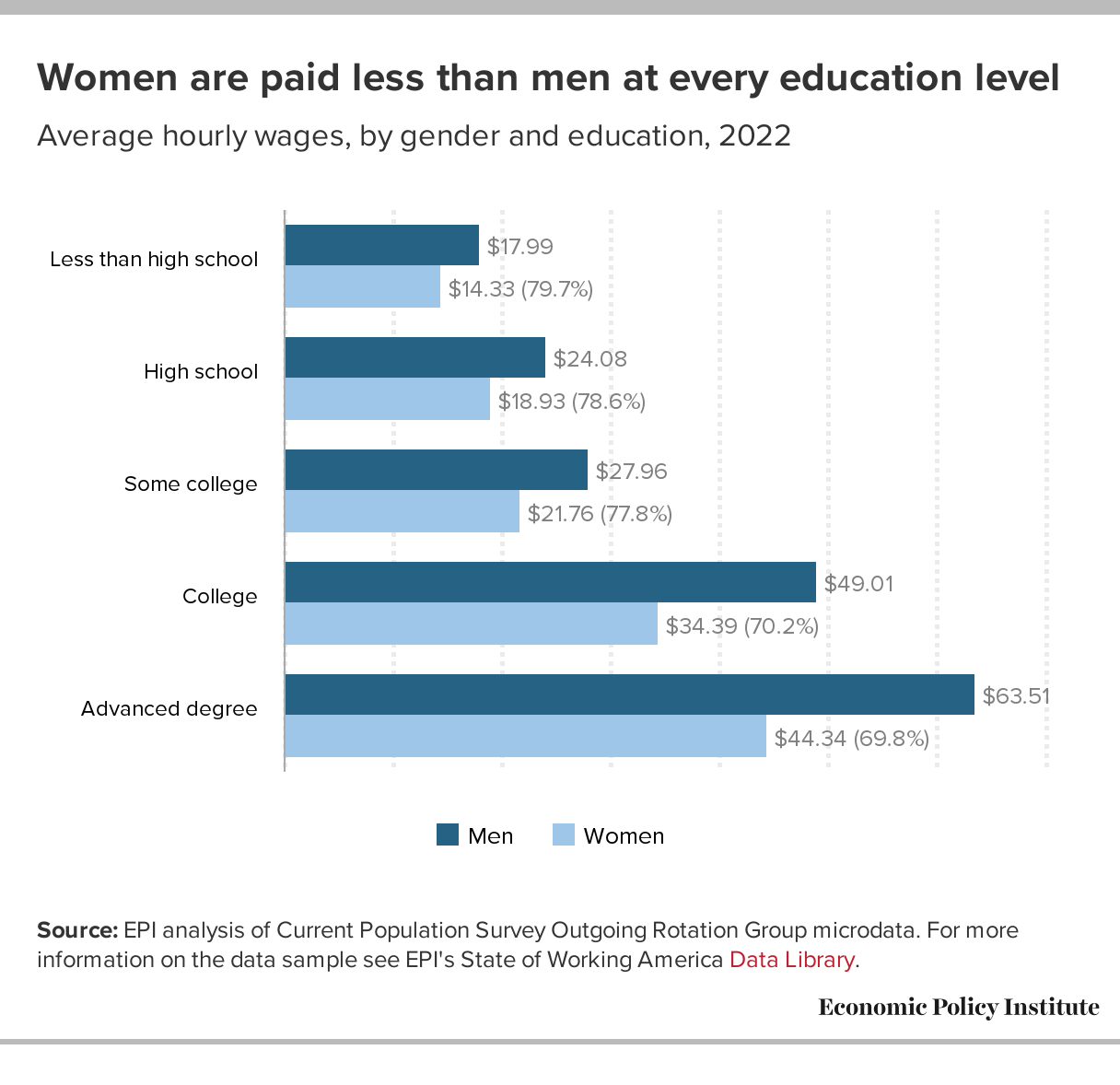Widening Gender Wage Gap in the U.S.: Pandemic Impact and Structural Issues
NEW YORK (AP) – The COVID-19 pandemic has left a lingering impact on gender pay equity in the U.S. workforce, with new data revealing an unexpected setback. According to the U.S. Census Bureau’s 2023 report, the gender wage gap between men and women working full-time has widened for the first time in two decades.
Despite many women re-entering the workforce, especially in industries like hospitality, social services, and caregiving, economists believe the post-pandemic recovery has exacerbated the wage disparity.
—
Key Findings from the 2023 U.S. Census Report
Gender Wage Gap Worsens: Women earned 83 cents for every dollar earned by men working full-time, marking a decline from the 84 cents reported in 2022. This represents the first significant widening of the gap since 2003.
Progress Undone: While wages increased across the board, men saw faster gains, reversing the narrowing wage gap trend observed over the previous five years.
Pre-Pandemic Comparison: Although the gap has widened, the current ratio mirrors 2019 levels, showing how the pandemic stalled progress toward wage equity.
S.J. Glynn, chief economist at the U.S. Labor Department, cautions against drawing long-term conclusions from the 2023 data. “Whether this is a temporary fluctuation or a sign of a deeper trend remains unclear,” Glynn said. Nonetheless, the data highlights how far behind women were even before the pandemic disrupted workforce dynamics.
—
Latina Workers Drive Workforce Growth, But Gaps Persist
Notably, Hispanic women (Latinas) were the only group whose wage gap narrowed slightly compared to white men in 2023. According to data from the National Women’s Law Center and the National Partnership for Women & Families, the number of Latinas working full-time surged by 5%, despite the overall number of full-time female workers remaining stagnant.
However, challenges remain for Latinas, who earn a median salary of $43,880—significantly lower than white women ($60,450) and white men ($75,950). The pandemic hit Latina workers particularly hard, with unemployment reaching 20.1% in April 2020, the highest of any demographic group.
Domestic workers, many of whom are immigrant women, faced especially severe setbacks. Ingrid Vaca, a home care worker from Falls Church, Virginia, shared how repeated COVID-19 infections disrupted her ability to work. “It was very hard,” she recalled, describing her struggle to find stable employment and cover basic living expenses during the pandemic.
—
Structural Barriers and Policy Debates
Experts point to underlying economic structures that contribute to persistent wage inequality. Seher Khawaja, director of Economic Justice at Legal Momentum, emphasized the need to properly value unpaid or underpaid care work, much of which is performed by women.
“Until we recognize the essential role of caregiving and provide it with adequate compensation, women will continue to be left behind,” Khawaja noted.
While lawmakers from both political parties acknowledge these challenges, they remain divided on solutions. The Democratic-led Paycheck Fairness Act, which aims to strengthen the 1963 Equal Pay Act and protect workers from pay discrimination, faces opposition from Republicans who argue it could encourage unnecessary litigation.
Vice President Kamala Harris recently renewed her support for the bill following the death of equal pay advocate Lilly Ledbetter, underscoring the significance of addressing pay inequity.
—
Long-Term Impact of Pay Inequity
The ripple effects of wage inequality extend beyond individual women, impacting families and perpetuating cycles of poverty, according to Khawaja. “This is not just a women’s issue—it’s a family issue,” she said, highlighting how children and communities suffer from reduced household income.
Despite occasional setbacks like the 2023 wage gap increase, experts remain cautiously optimistic. Matthew Fienup, executive director at California Lutheran University’s Center for Economic Research & Forecasting, notes that progress toward gender pay equity has been made since 1981, even if it has not been linear. “It’s important not to overemphasize one year’s data,” Fienup said.
—
Conclusion
The widening gender wage gap in 2023 serves as a stark reminder of the obstacles still facing women in the workforce. As the U.S. navigates its post-pandemic recovery, closing the gap will require addressing deep-rooted structural issues and advancing supportive policies. Without meaningful change, pay inequity will continue to hinder not only women but also families and future generations.
For policymakers, businesses, and advocates, the challenge remains clear: achieving true gender equity requires more than just recovering lost ground—it demands systemic reform.
Source : Swifteradio.com


